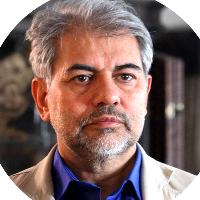Analyzing the Concept of Private Language in Art as a Social Matter with a View to Wittgenstein's Play-Linguistic Theory (With Emphasis on the Element of Color in Urban Graphic Design)
In the late Wittgenstein's view, language is a social and non-private matter, and in this case, the meaning of words will be based on compliance with the rules approved by a linguistic community. But due to the multiplicity of people's ways of life, the rules governing these societies are diverse and these rules show the meaning of words, as a result, a word will have the same meaning as the number of ways of life in which it is used. It is obvious that the most basic urban component that can describe this variety of language communities is the urban graphics of that place and at first glance the element of color. The element of color not only affects the understanding of smaller situations such as the design of a store, but also has a wider effect in giving identity to large urban environments. Therefore, the purpose of this research is to analyze the understanding of the spatial identity of the citizen society in the dynamic process of place-making through color, emphasizing the privacy of language in the aforementioned theory. The present research is theoretical in terms of its fundamental purpose, and the necessary information has been obtained through descriptive-analytical and library studies from reliable sources. The obtained results show that in order to negate the private language, the understanding of the environment through the sense of belonging of the people to the environmental graphic content has become general, and in this way, a color reference point that can be read by the general citizens can be reached. Relying on this point of view, the conclusion was reached that the public image has replaced the self-image by preserving individual memory, and in addition to preserving individual color tastes, by participating in people's lives, it will be possible to present an acceptable collective color pattern for urban graphics.
-
A Comparative Study of Horse Images in Iranian Paintings (Ilkhānid Period) and Chinese Art (Song and Yuan Periods)
Bahareh Moayeri *, , Syyed Abutorab Ahmadpanah
Negareh journal, -
The Romantic Gaze: The Romantic Gaze: the phenomenon of the visual in the Majnun and Leyla Painting of Jami’s Haft Awrang, the Mashhad School in Comparison with Poetic Narratives of Jami and Attar
Monireh Panjtani *,
Journal of Mysticism Studies in Literature, -
An Examination of Relativism in Richard Mervyn Hare's Moral Philosophy
Mahdi Misaghinezhad, Mahdi Najafiafra *,
Ayeneh Marefat, -
A Comparative Study of Mullā Ṣadrā’s and Shaykh Aḥmad al-Aḥsāʾī regarding the Fate of the Human Body after Death
Sasan Yaghmaei, Muhammad Ekwan *, Enshallah Rahmati
Journal of Imamiyyah Studies, -
Significance of Similarity and Difference Components in the Expression of Identity and its Impact on Urban Graphic Design
, *, Parnaz Goodarzparvari,
Journal of Rahpooye honar,




